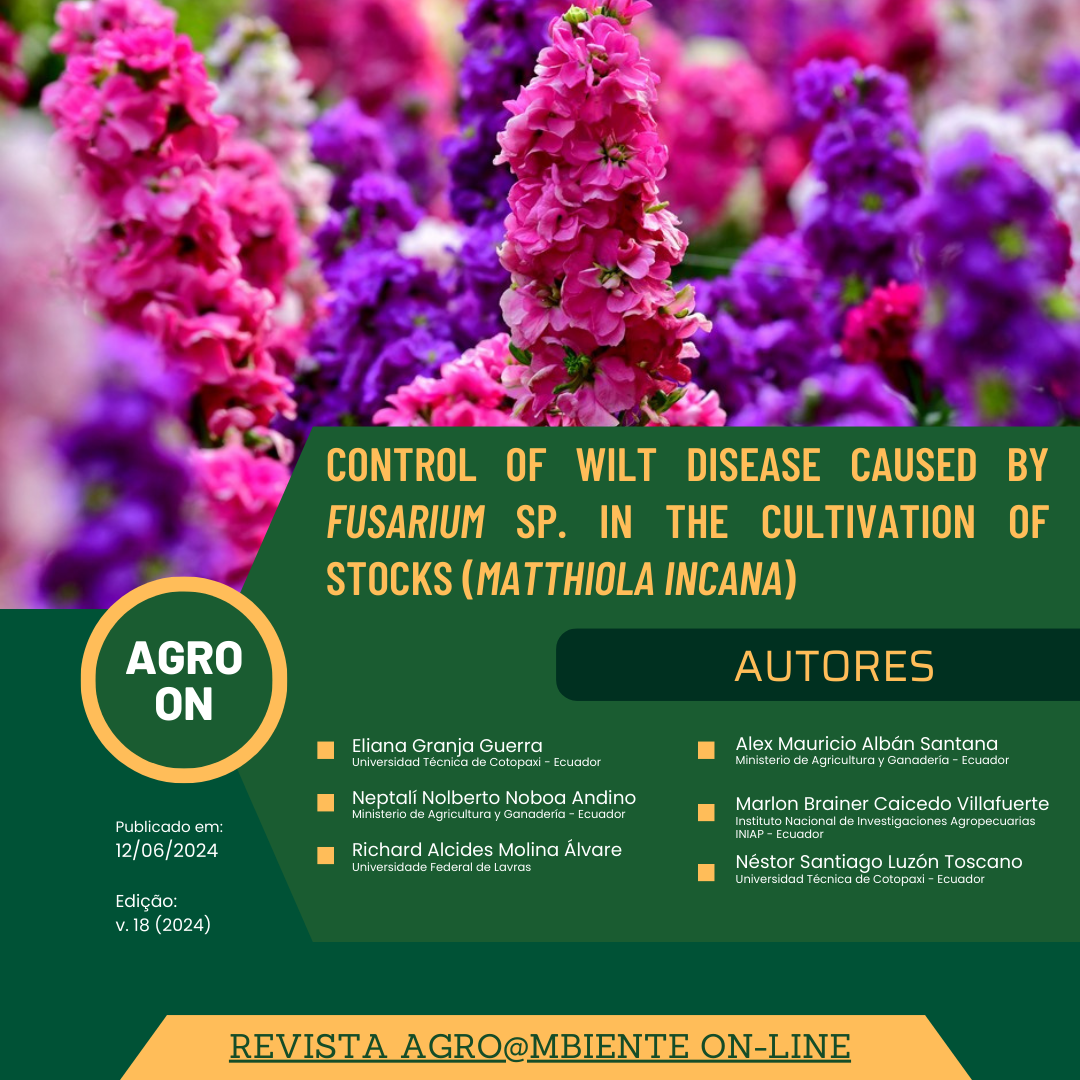Control of wilt disease caused by Fusarium sp. in the cultivation of stocks (Matthiola incana)
DOI:
https://doi.org/10.18227/1982-8470ragro.v18i00.7848Palavras-chave:
Matthiola incana. Stocks. Bacillus Subtilis. Trichoderma sp. Severity.Resumo
In greenhouse cultivation of stock (Matthiola incana), the main causative agent of its death is the fungus Fusarium sp., especially in the early phenological stages, resulting in significant losses during the first four weeks of cultivation. Therefore, the objective of this study was to evaluate phytosanitary control techniques (chemical, biological, and antibiotics) to reduce Fusarium sp. infection in stock (Matthiola incana) cultivation. The experiment was conducted in a randomized block design with five treatments (control; chemical products; biological products, antibiotics, and product combinations) and three replications. The chemical active ingredients used were aluminum phosphite, iprodione, captan, and Hymexazol. Biological solutions included Trichoderma sp. and Bacillus subtilis, while antibiotics used were Weed Pirocontrole, Kasugamicin, Polioxin B, Azoxystrobin, and Kresoxym methyl. Additionally, product combinations were evaluated, such as Fosetyl aluminum, Bacillus subtilis, Polioxin B, Hymexazol, and Azoxystrobin. Control efficacy was measured based on the severity of fungal growth in culture, while mortality represented the loss rate at the end of the experiment. The combined treatment of techniques was superior, with a mortality rate of 13.77%, compared to the 63.00% recorded in the absolute control group. These results underscore the importance of an integrated approach to Fusarium sp. control in stock cultivation, emphasizing the effectiveness of combining different phytosanitary techniques to minimize losses and promote successful production.

Downloads
Publicado
Edição
Seção
Licença
Copyright (c) 2024 REVISTA AGRO@MBIENTE ON-LINE

Este trabalho está licenciado sob uma licença Creative Commons Attribution-NonCommercial-NoDerivatives 4.0 International License.
Declaro em meu nome e em nome dos demais autores que aqui represento no ato da submissão deste artigo, à REVISTA AGRO@MBIENTE ON-LINE que: • 1. O conteúdo do artigo é resultado de dados originais e não publicados ou submetidos a outros periódicos. • 2. Além do autor principal, todos os co-autores participaram suficientemente do trabalho para tornar públicas as respectivas responsabilidades pelo conteúdo. • 3. Em caso de aceitação do artigo, os autores concordam que os direitos autorais a ele referentes se tornarão propriedade exclusiva da Revista Agro@mbiente On-line, vedada qualquer reprodução, total ou parcial, em qualquer outra parte ou meio de divulgação, impressa ou eletrônica, sem que a prévia e necessária autorização seja solicitada e que, se obtida, devem constar os agradecimentos à Revista Agro@mbiente On-line do Centro de Ciências Agrárias/UFRR.


